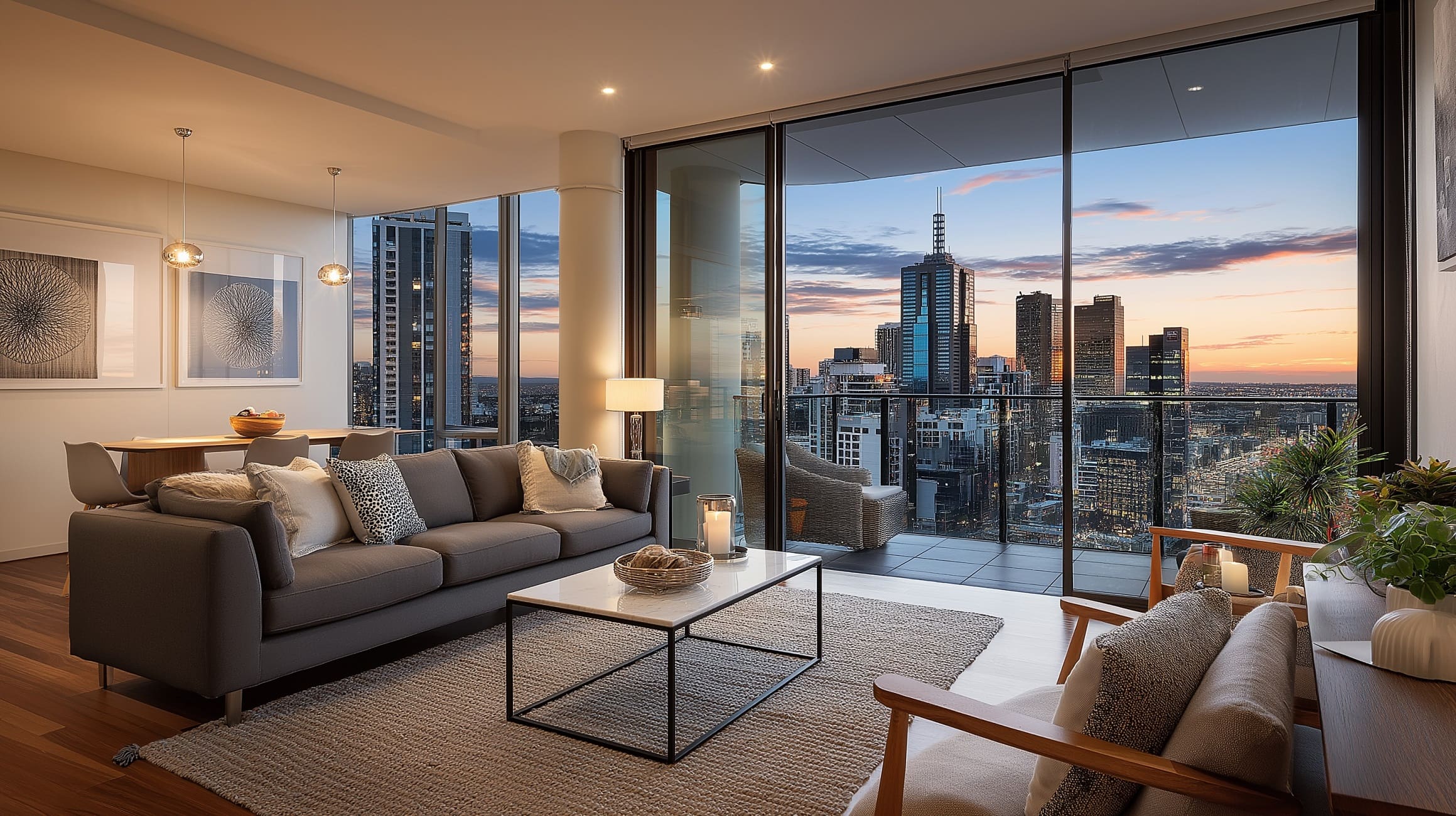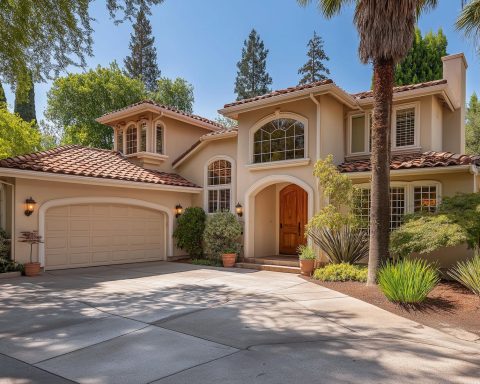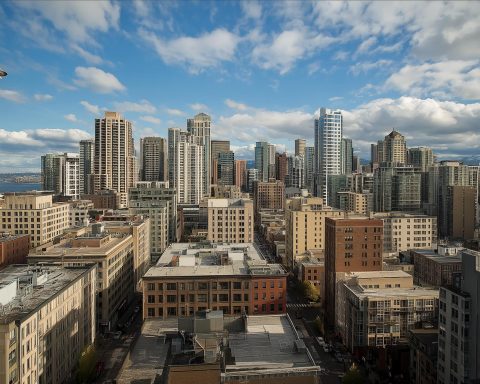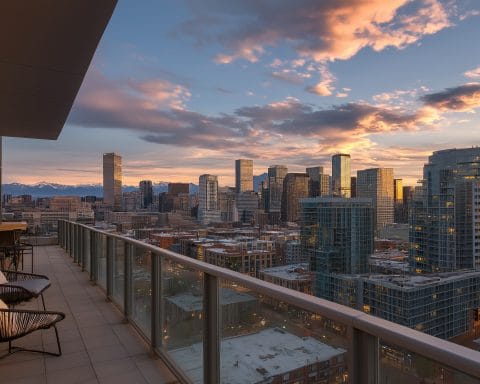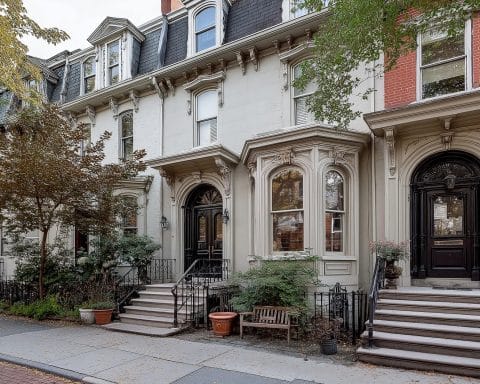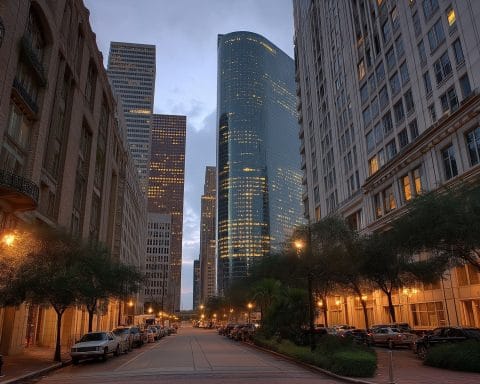Melbourne’s property market in 2025 is showing clear signs of a rebound after a challenging period. Both residential and commercial sectors are experiencing shifting dynamics as Australia’s second-largest city benefits from renewed demand, record population growth, and improving sentiment. In this comprehensive report, we break down the latest trends in Melbourne’s real estate market – from housing prices and suburb hotspots to rental yields and infrastructure impacts – and look ahead to what investors, developers, and homeowners can expect in the coming years.
Residential Property Market Trends (2025)
Melbourne’s residential market has entered 2025 with gathering momentum. After a downturn through 2022–2023, when rising interest rates and pandemic disruptions caused values to slip, the tide is turning. In fact, Melbourne home values have now logged several consecutive months of growth in early 2025 propertyupdate.com.au. This marks a notable turnaround from 2024, when prices were falling in most months propertyupdate.com.au. Market sentiment is improving as buyers regain confidence amid expectations that interest rates will stabilize or even begin to fall later in the year commercialrealestate.com.au. Importantly, Melbourne remains underpinned by strong fundamentals – robust population gains, major infrastructure investments, and a diversified economy – which reinforce its status as a top long-term property market in Australia propertyupdate.com.au.
Several factors are contributing to the current housing market dynamics. On the supply side, new housing construction has not kept up with demand. Building approvals in Victoria have been languishing at low levels – only about 56,000 new homes were approved in the past year (to March 2025), well below the ~75,000 per year needed to meet growth targets realestate.com.au realestate.com.au. High construction costs and builder insolvencies have further constrained new supply realestate.com.au realestate.com.au. This undersupply is colliding with surging demand driven by population growth, creating competition for existing homes. Listings remain relatively tight; although new listings spiked in May 2025 (the second-highest May on record), total properties for sale are still lower year-on-year shapepropertygroup.com.au, indicating many sellers are holding off – perhaps waiting for higher prices. The result is that well-presented homes, particularly in desirable suburbs, are attracting strong buyer interest and quicker sales. Auction clearance rates in Melbourne hit about 67% in May 2025 – the highest in nearly two years, reflecting this renewed buyer confidence shapepropertygroup.com.au.
Notably, not all segments of the market are equal. Free-standing houses and family-friendly properties in established areas are leading the recovery. By contrast, high-density inner-city apartments – especially older high-rise units – continue to face headwinds from oversupply and cautious investor sentiment. Property experts caution against off-the-plan apartments in Melbourne’s CBD and inner suburbs, which have historically underperformed due to abundant supply and weaker long-term capital growth propertyupdate.com.au propertyupdate.com.au. On the other hand, middle-ring suburbs with scarce supply (e.g. houses on good-sized land) and strong owner-occupier appeal are seeing heightened demand. Overall, the residential market in 2025 is shifting from a buyer’s market toward a more balanced or even seller-leaning market. Buyers who were in a position to negotiate steep discounts a year ago are now finding that window narrowing as competition heats up shapepropertygroup.com.au.
Commercial Property Market Trends (2025)
The commercial real estate sector in Melbourne is also at an inflection point in 2025. Having weathered the pandemic and high interest rates, different commercial asset classes are now showing divergent trends:
- Office Space: Melbourne’s office market remains soft, especially in the CBD. The city continues to record the highest office vacancy rate in Australia, with CBD vacancies stable around 18% as of January 2025 propertycouncil.com.au. This is significantly above the national CBD average (~13.7%) and reflects ongoing challenges like remote work and new supply additions propertycouncil.com.au. Demand for office space has been negative in recent reporting periods propertycouncil.com.au, though there are signs that the worst may be over. Premium-grade offices are faring a bit better than secondary stock, but even A-grade buildings in Melbourne showed ~18.5% vacancy at the start of 2025 propertycouncil.com.au. Landlords are responding by offering incentives and refurbishing older offices to entice tenants. The high vacancy and reduced rents in some pockets present opportunities for businesses to upgrade locations, and for investors to acquire discounted office assets. Industry analysts expect the office sector to gradually recover heading into 2026 as return-to-office initiatives gain traction and the economy improves commercialrealestate.com.au commercialrealestate.com.au. However, it may be a slow climb; policy support (such as government directing workers back to offices) could play a role in revitalizing Melbourne’s CBD office demand propertycouncil.com.au.
- Retail Property: After several tough years, retail real estate is mounting a comeback. Foot traffic and retail spending have improved with the end of lockdowns and the return of tourists and office workers to the city. Strip shopping precincts and shopping centers are reporting higher patronage, and investors are regaining interest in well-located retail assets. In fact, 2024 saw retail properties account for an increasing share of commercial transactions, indicating renewed confidence in the sector commercialrealestate.com.au. Analysts predict that 2025 will see the strongest investor demand for retail property in about a decade, as sentiment shifts positively commercialrealestate.com.au commercialrealestate.com.au. Prime retail malls and essential services-based centers (grocery-anchored, large format retail, etc.) have proven resilient, and many shopping centers have adapted by adding entertainment and dining options to drive more visits commercialrealestate.com.au. While headwinds like e-commerce remain, physical retail in Melbourne – especially in growth corridors and established suburbs – is again viewed as a solid asset class. Rental yields for retail properties have become attractive after price corrections, and limited new retail development in recent years means supply is tight in prime locations.
- Industrial and Logistics: The industrial property sector has been the standout performer nationwide, and Melbourne is no exception. Huge demand for warehouses, distribution centers, and logistics facilities (turbocharged by the e-commerce boom and supply chain realignments) drove industrial vacancies to record lows over the past two years. As of mid-2025, the industrial vacancy rate in Melbourne has inched up to around 4% propertycouncil.com.au – a slight rise due to new supply coming online in the outer suburbs – but this is still exceptionally low by global standards and signals a very tight market propertycouncil.com.au. In Melbourne’s key eastern and south-eastern industrial precincts, vacancy is even lower (near 1–2%), whereas the outer west, with a wave of new developments, has higher available space propertycouncil.com.au propertycouncil.com.au. Rents for industrial units and logistics warehouses have surged over the past 18 months, and although rental growth may moderate as more supply is delivered, occupancy rates are expected to remain high. Investor interest in industrial assets remains robust, but yields have compressed to historically low levels given the sector’s popularity. Some normalization is occurring – for example, national industrial vacancy ticked up to 2.8% in H1 2025 from nearer 1% at the trough propertycouncil.com.au – yet Melbourne’s industrial market is still among the tightest globally, with long-term demand drivers like limited industrial land and sustained goods consumption in place propertycouncil.com.au propertycouncil.com.au. Overall, industrial real estate continues to offer stable income and growth potential, although the days of double-digit rent hikes may be cooling.
In summary, Melbourne’s commercial market in 2025 is characterized by recovery and opportunity: the office sector offers counter-cyclical investment potential as values bottom out, retail is rebounding with pent-up consumer activity, and industrial remains a powerhouse albeit with modestly easing conditions. Savvy investors are beginning to re-enter the commercial market, taking advantage of repriced assets and anticipating long-term growth as the economic cycle turns commercialrealestate.com.au commercialrealestate.com.au.
Key Suburb-Specific Insights: Growth Areas and High-Demand Neighborhoods
Melbourne is a vast metropolitan area, and its real estate performance varies widely from suburb to suburb. In 2025, certain locations are emerging as growth hotspots due to factors like infrastructure projects, demographic trends, and relative affordability. Here are some key suburb-specific insights:
- Inner and Middle-Ring Stars: Affluent inner-city suburbs and well-established middle-ring areas are showing resilient demand and, in some cases, strong price growth. Over the past year, prestigious neighborhoods such as Toorak and South Yarra saw house values jump by around $136k–$237k, more than the average annual wage propertyupdate.com.au propertyupdate.com.au. The inner eastern belt (e.g. Canterbury, Balwyn, Surrey Hills) also notched six-figure gains in median values propertyupdate.com.au. These areas benefit from premium amenities, schools, and lifestyle appeal, and limited supply keeps competition high. Middle-ring suburbs in the 5–15km radius from the CBD – for example, Brunswick, Preston, Essendon, Mount Waverley, and Box Hill – are flagged by buyers’ agents as offering great value in 2025 auspropertyprofessionals.com.au. They combine relative affordability (compared to the inner city) with strong rental demand and community infrastructure. These suburbs, often undergoing gentrification, are expected to recover quickly as the market rebounds due to tight housing stock and broad buyer appeal auspropertyprofessionals.com.au. Investors also look to “sister” suburbs adjacent to these hot spots, anticipating a ripple effect on prices once the prime areas heat up auspropertyprofessionals.com.au.
- Emerging Infrastructure Corridors: Major transport projects are reshaping Melbourne’s property map, and suburbs positioned near new infrastructure are poised for long-term growth. A prime example is the Suburban Rail Loop (SRL) – a massive orbital rail line under construction. Areas along the SRL route, such as Clayton, Burwood, and Cheltenham, are attracting attention from savvy investors and developers auspropertyprofessionals.com.au. These locales are slated to become well-connected hubs, which typically boosts property values once projects near completion. Similarly, the Metro Tunnel (set to open in 2025) will deliver new underground stations at Arden (North Melbourne) and Parkville; the surrounding precincts are already seeing increased development interest. Sunshine, in the western suburbs, is another one to watch – it will be a key interchange for the future Melbourne Airport Rail and metro lines, positioning it as a new growth center. As infrastructure comes online, improved accessibility and new amenities tend to drive both demand and prices in these connected suburbs.
- Gentrifying Family Suburbs: A number of previously undervalued suburbs are now rapidly gentrifying, drawing in young families and professionals seeking more space. In Melbourne’s east, areas like Ringwood, Blackburn, and Glen Waverley have been experiencing this transition auspropertyprofessionals.com.au. They boast good schools, parks, and transport links, making them attractive for long-term owner-occupiers. Upgrades in local shopping and dining (as well as some ongoing infrastructure improvements) are lifting the profile of these communities. As a result, housing demand in these suburbs is strong, pushing up both prices and rents. Likewise, pockets of the north and northwest (for example, Pascoe Vale, Preston, and Coburg in the north) are seeing new cafes, renovations, and young buyers transform the area. These gentrifying locales often offer solid investment prospects, as they start from a lower price base but have clear drivers for capital growth.
- Outer Growth Corridors: Melbourne’s outer fringe suburbs – especially in the west and north – continue to absorb the bulk of the city’s population growth. Areas like Fraser Rise–Plumpton (Melbourne’s outer west) led the state in population increase last year (+4,300 people in 2023–24) abs.gov.au abs.gov.au, and others such as Cranbourne and Tarneit are booming with new housing estates. These growth corridors offer plentiful new land and house-and-land packages that appeal to first-home buyers and migrants. However, buyers should approach with caution: while these areas see fast population growth, they often have abundant new development and can lack established amenities. As one analyst notes, rapid growth in places like Melton and Werribee South is largely “reflecting population growth and abundant new development, but not necessarily capital growth” in property values propertyupdate.com.au. In the long term, limited local infrastructure – fewer transport links, schools, and hospitals – may constrain price appreciation in some far-flung estates propertyupdate.com.au. In short, outer suburbs are affordable and in demand for housing, but they generally carry higher investment risk and typically yield slower capital growth than inner/middle-ring suburbs (unless backed by major infrastructure upgrades).
In the current market, suburb selection is critical for investors and homebuyers alike. High-demand, well-located neighborhoods with scarce supply are bouncing back strongly and expected to outperform, whereas homogenous outer suburbs with oversupply may lag. Keeping an eye on infrastructure plans and council development forecasts can help identify the next emerging suburb. For instance, areas near planned SRL stations or new freeway interchanges today could become the property hotspots of 2030. Overall, Melbourne’s geography of opportunity in 2025 spans from blue-chip inner enclaves to up-and-coming middle suburbs and select growth nodes – offering options for different budgets and strategies.
Property Prices: Trends and Forecasts
After a period of correction, Melbourne’s property prices are trending upward again in 2025. The median house price in Melbourne peaked in early 2022 (around the height of the pandemic boom) and then fell by roughly 10% through 2023 auspropertyprofessionals.com.au. This downturn, caused by interest rate hikes and a temporary exodus of investors, made Melbourne one of the most “undervalued” capital city markets in Australia by early 2024 auspropertyprofessionals.com.au. Fast forward to mid-2025, and the landscape is improving: prices have stabilized and begun a modest climb. Domain’s Home Price Index shows Melbourne’s dwelling values moving out of negative annual growth – by May 2025 the annual decline had eased to just -1.2%, a big improvement from -7.8% in early 2023 corelogic.com.au corelogic.com.au. Month-to-month, prices have been inching up since around February 2025 corelogic.com.au. In practical terms, buyers and sellers are seeing that the market floor has likely passed.
Looking ahead, forecasters are predicting further price growth for Melbourne through 2025 and 2026. Domain’s latest projections indicate Melbourne may lead the nation in the next upswing. By the end of the 2025–26 financial year (June 2026), Melbourne’s median house price is forecast to reach a record ~$1.11 million, roughly a 6% rise on mid-2025 values australianpropertyupdate.com.au australianpropertyupdate.com.au. That increase (~$66,000) would fully erase the losses of the recent downturn and set a new price peak australianpropertyupdate.com.au shapepropertygroup.com.au. Unit prices are also expected to gain, though at a slower pace – Melbourne’s median unit is forecast to hit ~$584,000 by mid-2026, which is still about 3% below its 2021 peak australianpropertyupdate.com.au shapepropertygroup.com.au. This more modest unit recovery is attributed to the lingering glut of unsold apartment stock from earlier building booms shapepropertygroup.com.au. Nonetheless, factors like improved affordability, first-home buyer incentives, and population growth will support the apartment market, likely pushing unit values upward in coming years shapepropertygroup.com.au.
Several drivers underpin these price forecasts. First, borrowing costs are expected to ease – financial markets anticipate the Reserve Bank of Australia will begin cutting interest rates in late 2025 commercialrealestate.com.au. Lower mortgage rates increase buyers’ capacity and typically stimulate demand, which puts upward pressure on prices. Domain’s economists note that Sydney and Melbourne, which have among the highest household debt levels, tend to respond fastest to interest rate changes australianpropertyupdate.com.au australianpropertyupdate.com.au. This means as soon as rate cuts are implemented or even firmly signaled, Melbourne’s buyer activity and price growth could accelerate. Secondly, limited housing supply is forecast to persist. New construction is not expected to rapidly ramp up (given ongoing construction industry challenges), so the housing shortfall will continue to be a key factor s3.ap-southeast-2.amazonaws.com s3.ap-southeast-2.amazonaws.com. Strong population increases (discussed in the demographics section) against this constrained supply will naturally bid up housing costs. Finally, various government supports – such as first-home buyer grants, shared equity schemes, and stamp duty concessions for lower-priced purchases – are providing some demand stimulus at the entry level, helping more buyers into the market and thereby lifting the overall price floor.
It’s worth noting that Melbourne currently offers a value advantage compared to other major cities, which could fuel extra price growth as investors and interstate migrants notice the gap. For example, Sydney’s median house price is roughly 60–65% higher than Melbourne’s as of early 2025 shapepropertygroup.com.au, a premium that has widened dramatically since 2019. Likewise, Brisbane and Adelaide – once far cheaper – have seen their prices catch up closer to Melbourne’s level shapepropertygroup.com.au. This relative affordability of Melbourne (despite being a large global city) is making it a magnet for price-sensitive buyers. As one report highlighted, Melbourne is now highly attractive for investors and upgraders who find Sydney out of reach shapepropertygroup.com.au shapepropertygroup.com.au. If interest rates fall, these buyers could flood into the Melbourne market, leveraging the city’s discount and driving values higher shapepropertygroup.com.au shapepropertygroup.com.au.
Of course, forecasts carry uncertainties. Most analysts call for steady, moderate growth (on the order of 4–6% per annum for the next couple of years) rather than a return to the double-digit annual spikes seen in 2021. Affordability constraints – with median house prices around 8–9 times income – will naturally cap how fast prices can rise, especially if wages don’t keep up s3.ap-southeast-2.amazonaws.com s3.ap-southeast-2.amazonaws.com. There are also downside risks such as a resurgence of inflation keeping borrowing costs high, or any new economic shock that hits employment. Nonetheless, the consensus among banks and research firms is that Melbourne’s housing values will continue trending upward into 2026 australianpropertyupdate.com.au australianpropertyupdate.com.au. For property owners, this suggests equity will rebuild, and for prospective buyers, waiting might mean paying more later.
In summary, after a soft patch, Melbourne’s prices are on the rise again, albeit at a measured pace. The city is forecast to regain its previous price peaks within the next year or so australianpropertyupdate.com.au, then potentially move into new high territory. Barring any shocks, 2025–2027 should be a period of renewed growth in property values, supported by easier credit conditions, population-led demand, and the enduring desirability of Melbourne as a place to live and invest.
Rental Market Performance (Yields and Vacancy Rates)
Melbourne’s rental market has been under extraordinary pressure, characterized by record-low vacancies and sharp rent increases, though there are signs that the pace of rent growth has started to moderate. Vacancy rates in Melbourne plummeted over 2022–2023 as the city emerged from COVID lockdowns and renters flooded back (including returning international students). By late 2023, the vacancy rate in Melbourne had fallen to around 1%–1.5%, an extremely tight level not seen in over a decade. In some months it even dipped below 1% in certain data series propertyupdate.com.au. Entering 2025, the vacancy rate has edged up slightly – hovering between roughly 1.5% and 2% as of mid-2025 – but this is still exceptionally low historically (for context, a 3% vacancy rate is often considered a “balanced” rental market). The latest figures show Melbourne’s rental vacancy at about 1.8% in early 2025, up from ~1.1% a year prior propertyme.com.au, reflecting a minor easing. Similarly, CoreLogic reported an increase in vacancies from a low of 1.4% in late 2023 to ~1.9% at the end of 2024 corelogic.com.au. Even with this slight relief, finding a rental property remains a serious challenge for tenants. Open for inspections in popular suburbs often see dozens of applicants, and properties are being leased within days.
This ultra-tight vacancy environment has driven rents to all-time highs. During the post-lockdown surge, Melbourne’s rents jumped by double digits – in 2022, some suburbs saw rents rise 15–20% in a single year. By 2023, the annual rent growth in Melbourne peaked around ~11% corelogic.com.au corelogic.com.au. However, as affordability constraints set in, rent growth has decelerated. Over the year to end-2024, Melbourne’s rents rose by a more moderate ~4.1% corelogic.com.au – still above the long-term average, but a far cry from the earlier boom. For the March quarter of 2025, increases have been in the low single digits percentage-wise. The median weekly rent in Melbourne is now approximately $600+ (for combined houses and units). As of end-2024, Melbourne’s median dwelling rent was $604 per week, which actually made it the second-cheapest capital city for renters after Hobart corelogic.com.au. (Sydney by comparison was a steep $773/week corelogic.com.au, highlighting that Melbourne, while expensive, isn’t as costly as Sydney for renters.) Renters in Melbourne are still spending a high share of income on housing – on average about one-third of household income, the highest ratio since at least 2006 nationally corelogic.com.au – which means there’s a ceiling to how much more rents can jump without pricing renters out.
One of the most striking developments in Melbourne’s rental market has been the exit of many investors/landlords, which has reduced rental supply. Data from Victoria’s Residential Tenancies Bond Authority (RTBA) reveal an unprecedented trend: more rental bonds are being refunded (i.e. landlords exiting and returning bonds) than new bonds lodged. In the March quarter of 2025, for example, 3,398 more bonds were refunded than new ones lodged in Victoria propertyupdate.com.au propertyupdate.com.au. In other words, the number of active rentals is shrinking – something that hadn’t happened in over 20 years of record-keeping propertyupdate.com.au propertyupdate.com.au. Since mid-2023, Victoria has lost around 25,000–30,000 rental properties from the market abc.net.au abc.net.au as landlords sell out or repurpose their properties. This investor retreat is driven by multiple factors: higher interest rates (making it more expensive to hold investment properties), heavier land tax and stamp duty burdens in Victoria (which have made being a landlord less profitable propertyupdate.com.au propertyupdate.com.au), and stringent tenancy laws that some landlords feel overly favor tenants (e.g. difficult eviction processes, mandated property maintenance standards) propertyupdate.com.au propertyupdate.com.au. The Victorian government implemented 130+ tenancy rule changes in recent years, giving tenants more rights regarding pet ownership, minor modifications, and lease terminations, which – while great for renters’ security – have been cited by landlord groups as a reason some are leaving the market propertyupdate.com.au propertyupdate.com.au. This perfect storm has led to a reduction in rental listings, exacerbating the vacancy crunch. Paradoxically, by imposing policies aimed at helping renters (like rent caps or extra tenant protections) and higher taxes on investors, the short-term effect has been many investors pulling out, thus reducing rental supply and putting upward pressure on rents propertyupdate.com.au propertyupdate.com.au.
For renters, the current market means intense competition and rising costs. For property investors who remain, it means record-low vacancy and improving rental yields. Indeed, rental yields in Melbourne have started to climb off historic lows. During the prior boom, property values rose much faster than rents, compressing gross yields (at one point, Melbourne’s average yield fell under 3%). Now, thanks to falling prices in 2022–23 and rising rents, yields have been trending up. By late 2024, Melbourne’s gross rental yield for dwellings had risen to about 3.7% corelogic.com.au corelogic.com.au. This is still relatively low (Darwin and some smaller cities have 5–6% yields), but it’s higher than the ~3.4% yields a year earlier. Houses in Melbourne tend to yield a bit below units (since houses have higher prices); for instance, Melbourne’s house yields are around 3.3%, while unit yields are over 4% in many cases. With interest rates currently higher than rental yields, most properties still run negative cash flow, but the gap is narrowing. Importantly, if interest rates drop in 2025–2026 and rents remain high, many Melbourne rentals could turn cash-flow neutral or positive, which would be an appealing situation for investors.
Going forward, the rental outlook is a tug-of-war between supply and demand. On one hand, demand may get some relief as housing affordability pressures push some renters to become first-home buyers (taking advantage of schemes or slightly lower prices in 2024) – indeed, Victoria saw an uptick in first-home buyer activity which might be easing rental demand marginally abc.net.au abc.net.au. There’s also a natural limit to rent growth as tenants double-up or stay with family if rents get too high corelogic.com.au, effectively reducing household formation rates. On the other hand, supply of rentals isn’t likely to improve drastically in the short term. Build-to-rent developments (large-scale rental apartment projects) are in the pipeline and the government is encouraging them with tax incentives, but these will take years to make a dent. Investor sentiment towards Victoria needs to recover for rental stock to grow again. The state government is acknowledging the rental crisis and has started exploring measures like fast-tracking development in activity centers and examining tax settings to lure investors back abc.net.au abc.net.au. Until more balance is restored, expect Melbourne’s rental market to remain landlord-friendly with low vacancy. Rent increases year-on-year might settle in the mid-single-digit percentages (e.g. 3–5% per annum) assuming the peak stress has passed corelogic.com.au corelogic.com.au, but any surge in migration or delay in new housing supply could reignite rapid rent spikes. For now, 2025 renters are still in for tough conditions, and property owners are enjoying the strongest rental yields (and shortest letting times) seen in Melbourne in many years.
Major Infrastructure Projects and Their Impact on Property
Melbourne is in the midst of an infrastructure boom, with several city-shaping projects underway or in the pipeline. These projects – from new rail lines to highways – are not only transforming how people move around the city but are also influencing real estate demand and development patterns. Here are some of the key infrastructure initiatives and their expected impact on Melbourne’s property market:
- Metro Tunnel (Underground Rail Loop): Due for completion in 2025, the Metro Tunnel is creating a new cross-city rail line with five new underground stations (including Arden, Parkville, State Library, Town Hall, and Anzac). By untangling the busy City Loop and adding capacity, this project will significantly cut travel times to key precincts like the hospital and university district in Parkville. Property impact: Areas around the new stations are already seeing a surge in investor interest. For example, the once-industrial Arden precinct is slated for major redevelopment into a mixed-use hub; early movers are acquiring sites in anticipation of price appreciation. Parkville – home to Melbourne Uni and biotech facilities – will benefit from a station, likely boosting demand for apartments and student accommodation nearby. Overall, improved connectivity tends to increase property values by making suburbs more accessible. Once operational, the Metro Tunnel should relieve pressure on roads and existing lines, enhancing the appeal of suburbs on the Sunbury and Cranbourne/Pakenham lines (which the tunnel links). We can expect a ripple effect of higher development density and rising house prices within walking distance of the new stations over time.
- Suburban Rail Loop (SRL): This ambitious project, now under construction (initial stages), will eventually form a 90-km orbital railway around Melbourne’s middle suburbs, connecting key centers from Cheltenham (in the south-east) through Clayton and Box Hill, then to the northern suburbs and finally to Melbourne Airport and Sunshine in the west. It’s a decades-long endeavor, but the first phase (Cheltenham to Box Hill) is targeted for completion in the early 2030s. Property impact: The SRL is often touted as a “city-shaping” project because it will create new transport hubs and development magnets outside the CBD. In anticipation, real estate in suburbs earmarked for SRL stations has been heating up. For instance, Clayton, which will host a major SRL interchange (and is already a job hub with the Monash University and medical center), is seeing stronger demand – investors foresee higher rental catchments and unit development opportunities there auspropertyprofessionals.com.au. Burwood (near Deakin University) and Box Hill (a large commercial center) are similarly poised for growth, with the latter already undergoing high-rise developments. The government plans more housing and commercial development around these SRL station precincts, potentially adding tens of thousands of new dwellings along the line over time vic.gov.au gleneira.vic.gov.au. For homeowners and investors, being near a future SRL station could mean significant capital gains as accessibility and amenities improve. However, it’s a long-term play; in the short term, some uncertainty remains about project timelines and exact alignment, but overall the SRL is injecting optimism into Melbourne’s middle-ring real estate.
- West Gate Tunnel & Other Road Projects: The West Gate Tunnel (expected around 2025–26) will provide an alternative to the chronically congested West Gate Bridge, creating a new freeway link from Melbourne’s western suburbs to the port and CBD. This is crucial for areas like Wyndham (Werribee Point Cook) and Melton – currently, commuters from these growth areas face heavy traffic. The new tunnel and widened freeways should cut travel times from the west, enhancing the attractiveness of western suburbs for both residents and logistics businesses. As commuting becomes easier, suburbs like Altona, Laverton, and Sunshine West could see a boost in demand. Additionally, the massive North East Link project (connecting the ring road in Greensborough to the Eastern Freeway) is under construction and slated for completion by 2027. This will fill a missing freeway link in Melbourne’s northeast, likely lifting property values in suburbs such as Heidelberg, Bundoora, and Doncaster by reducing congestion and bringing those communities closer to job centers across town. Improved road connectivity tends to expand the feasible commute radius, which can lead to development of new housing estates and higher prices for well-located fringe land.
- Airport Rail Link: Plans to finally connect Melbourne Airport to the rail network (via a spur line from Sunshine, integrating with the Metro Tunnel) are moving forward. While timelines have been pushed (the target is now late 2020s), this project will be a game-changer for the north-west corridor. Sunshine, designated as a super-hub, is already earmarked for significant growth – including high-density housing and commercial projects – due to the airport rail and SRL interchange planned there. Investors are eyeing Sunshine and nearby St Albans and Footscray (which is on a direct line to the airport via Sunshine) as future hot spots. Improved access to the airport could also spur more business parks and hotels in the region, boosting the commercial real estate segment. Residential property in the Moonee Valley and Brimbank areas (e.g. Airport West, Keilor East) might gain appeal for frequent flyers and airline industry workers once a train can get them to the CBD or airport in minutes.
- Urban Renewal Precincts: Beyond transport, Melbourne has large urban renewal zones such as Fishermans Bend (a former industrial area south of the CBD being converted to a high-density mixed-use district) and Arden (as mentioned, tied to the Metro Tunnel). These are long-term projects but will add thousands of homes and workplaces. The impact on property is twofold: they provide new supply (helping moderate prices citywide) but also create highly desirable new neighborhoods which can command premium prices. For instance, if Fishermans Bend develops into a sought-after tech and education hub as planned, early property buyers there could see substantial appreciation.
In general, infrastructure upgrades tend to be a boon for property markets. Improved transport links make outer areas more accessible, often narrowing the price gap between those and inner suburbs. We’re already seeing developers target land around new station sites to build apartments, townhouses, or commercial centers, confident that demand will follow the trains. Large infrastructure projects also inject jobs into the economy during construction, which can support housing demand in the short term (workers needing rentals, etc.). Melbourne’s current infrastructure pipeline – part of the state’s “Big Build” – is one of the biggest in its history, and the real estate market is responding accordingly. Buyers with an eye on the future might consider positioning themselves in suburbs that, while perhaps overlooked now, will be “next to a train line” or enjoying reduced travel times in a few years. History shows that once an area becomes much more convenient (through a new highway exit or train station), property values often get a boost.
However, it’s important to temper expectations: not every project guarantees a property boom, and timing matters (values often rise in anticipation, then plateau during construction). Also, some neighborhoods will face disruptions (e.g. years of construction noise or acquired properties) which can be a short-term negative. Yet, on balance, Melbourne’s major infrastructure projects are set to enhance the city’s liveability and economic growth – factors that ultimately reflect positively in the real estate market. Investors are wise to “follow the infrastructure” when hunting for the next growth area, making this an integral part of property strategy in Melbourne for 2025 and beyond.
Population Growth and Demographic Shifts
Melbourne’s population story is one of remarkable growth and resilience, and it’s a critical driver of the property market’s future. After a brief stall during the pandemic (when closed borders caused net migration to fall), Melbourne’s population growth has roared back, now exceeding pre-pandemic trends. In fact, Melbourne had the largest population increase of any Australian city in 2023–24, adding about 142,600 new residents in that year alone abs.gov.au abs.gov.au. This 2.7% annual growth rate is among the fastest in the nation and is significantly higher than Sydney’s 2.0% growth in the same period abs.gov.au. Greater Melbourne’s population stood at roughly 5.35 million as of June 2024 abs.gov.au, narrowing the gap with Sydney (5.56 million) abs.gov.au. If these trends continue, Melbourne is on track to potentially overtake Sydney as Australia’s most populous city in the coming decade (some projections suggest by 2030 or shortly after). The city’s appeal – including abundant jobs, education opportunities, and cultural amenities – coupled with strong overseas migration, underpins this robust growth.
Net overseas migration has been the primary engine of Melbourne’s population gains recently. With Australia reopening borders and ramping up immigration targets to fill skill shortages, Melbourne (as a migrant favorite) is reaping the influx. International students, in particular, have returned in droves to Melbourne’s universities. This is evident in inner-city rental demand (where students rent apartments) and in certain suburbs with large migrant communities. For example, Melbourne has seen significant migration from countries like India, China, and Nepal, contributing to growth in suburbs such as Clayton and Tarneit (Indian diaspora), Box Hill and Glen Waverley (Chinese diaspora) and so on. These demographic patterns often influence housing preferences – e.g. strong demand for larger family homes in areas favored by migrants who often live in multi-generational households, or demand for rental apartments near universities from international students.
Another shift linked to COVID and after is internal migration trends. During 2020–2021, Melbourne experienced an outflow of residents to regional areas and other states (particularly Queensland) as remote work and lockdowns prompted lifestyle re-evaluations. However, more recently this trend has moderated or reversed. Regional population growth in Victoria is still positive, but the capitals (especially Melbourne) are once again capturing the bulk of growth abs.gov.au abs.gov.au. The lure of city jobs, education, and amenities appears to be drawing people back. Melbourne’s outer suburban growth areas (like those in the city’s west, north, and south-east) illustrate this: they were the fastest growing SA2 regions nationwide in 2023–24, indicating many people are moving into these new suburbs from elsewhere abs.gov.au abs.gov.au. Essentially, the urban fringe is expanding rapidly with young families and migrants. Meanwhile, some inner-city areas that lost residents during lockdown (like parts of the CBD and inner south) have bounced back now that offices, restaurants, and cultural life have resumed full swing.
In terms of demographic composition, Melbourne continues to be a cosmopolitan melting pot. Nearly 40% of Melburnians were born overseas, and that share will likely rise with the current migration wave. This diversity often manifests in vibrant cultural enclaves (Footscray for African communities, Springvale for Southeast Asian, etc.), each with their own housing market nuances. We also see demographic shifts like an aging population in some established suburbs – there’s a growing cohort of downsizers and retirees in areas like Beaumaris or Ivanhoe, for instance, which drives demand for low-maintenance units and townhouses. Conversely, the baby boom in growth areas means demand for larger houses, schools, and parks in those locales.
One notable projection: Victoria (and Melbourne by extension) is expected to lead the nation in population growth by FY2027 shapepropertygroup.com.au. It is set to climb from third place (in percentage growth) to first, overtaking the growth rates of states like Queensland or WA, which were leading recently shapepropertygroup.com.au. This is significant because it implies sustained high demand for housing in Melbourne in the medium term. A young, growing population keeps household formation rates high, thus requiring more dwellings. The challenge, as discussed, will be supplying enough housing – hence the focus on planning reforms and housing targets (the federal government’s Housing Accord aims to add 1.2 million homes nationwide by 2029, with a significant chunk needed in Melbourne’s growth corridors).
Another post-pandemic demographic trend worth mentioning is the return of immigration and student populations to inner Melbourne, which has revitalized the city. Areas like the CBD, Carlton, and Southbank, which saw rental vacancies skyrocket in 2020, are now back to very tight vacancy thanks to the influx of students and young professionals from abroad. This is helping reinvigorate unit markets in the inner city. It also means the character of those areas – international eateries, cultural festivals, etc. – is thriving again, making Melbourne the diverse, globally connected city it’s known to be.
Overall, population growth is a double-edged sword: it’s a major positive for property demand (more people = more housing needed at all price points), but it also strains infrastructure and can worsen affordability if housing supply doesn’t keep up. Melbourne’s planners are under pressure to accommodate this growth sustainably – through increased density in established areas, expansion of transport, and developing new suburbs with proper services. From an investor’s perspective, however, betting on a city with strong population growth like Melbourne is generally wise for long-term capital growth. Each new resident needs a place to live, so areas that are adding residents fastest (and have jobs or connectivity) often see above-average property appreciation. Melbourne’s demographics thus paint a picture of a city with a robust growth trajectory, fueling the real estate market well into the next decade.
Government Policy and Interest Rate Impacts
Government policies and macroeconomic factors – especially interest rates – have a profound influence on Melbourne’s real estate market. The period of 2022–2024 demonstrated this clearly: aggressive interest rate hikes by the Reserve Bank and several state policy changes cooled the market substantially. As we move through 2025, both policy environment and monetary settings are evolving in ways that will shape property outcomes.
Monetary Policy (Interest Rates): The Reserve Bank of Australia (RBA) raised the benchmark cash rate rapidly from record lows (0.1% in 2021) up to around 4.1% by mid-2023, in order to combat high inflation. This steep rise in mortgage rates greatly reduced borrowing capacity – for many buyers, the amount they could afford to pay for a home dropped 20–30%. Consequently, housing prices fell in 2022–23. Now in 2025, inflation has started to ease and the RBA has paused hikes. Financial markets and economists widely expect that the next moves will be rate cuts, possibly commencing in late 2025 commercialrealestate.com.au. Indeed, some forecasts suggest the RBA might trim rates twice in the second half of 2025 if inflation is under control commercialrealestate.com.au. The prospect of lower interest rates is already buoying buyer sentiment – knowing that mortgages might get cheaper increases confidence to purchase. Lower rates reduce monthly repayments or allow buyers to borrow a bit more, which can stimulate demand and price growth. Melbourne historically has been rate-sensitive, and as Domain’s Chief of Research notes, the city tends to respond quickly to shifts in interest rates australianpropertyupdate.com.au. Therefore, any concrete signal of rate cuts could lead to a surge of activity (as seen in past cycles where falling rates ignite a property uptick). Conversely, if inflation proves stubborn and the RBA delays cuts or even hikes further, that would act as a brake on the property recovery. For now, most indicators point to a stable or loosening monetary stance ahead, which is supportive for real estate.
Federal Government and Immigration Policy: The Australian federal government influences property indirectly through migration levels and housing programs. The current government has maintained high immigration targets to fuel economic growth – on the order of 300,000+ net overseas migrants per year for Australia, a significant portion of whom settle in Melbourne. This is a boon for housing demand. Federally, there are also schemes like the First Home Guarantee (allowing first-home buyers to purchase with as little as 5% deposit, government-backed) and the Regional First Home Buyer Guarantee, which help people enter the market. In 2025, eligibility for some schemes was expanded (e.g. friends or siblings can co-purchase under the FHG), which could have a marginal positive effect on demand. The Commonwealth has also launched the Housing Australia Future Fund aimed at financing affordable housing construction, though that’s focused on subsidized housing and may take time to materialize units on the ground.
Perhaps the most ambitious federal initiative is the National Housing Accord (striving for 1.2 million new homes nationwide by 2029). The accord’s success is uncertain – as noted earlier, current building approval rates are not on track to meet that goal realestate.com.au. However, the very existence of this target has spurred discussions on planning reform and incentives to boost supply. If federal or state governments introduce additional incentives for build-to-rent, streamline approval processes, or invest in infrastructure to unlock new land, those policies could gradually improve housing supply in Melbourne (thus tempering price rises and rent pressures). So far, 2024–2025 has seen modest policy tweaks – e.g. slight increases in Commonwealth Rent Assistance, some tax incentives for institutional rental housing – but no silver bullet yet for the housing shortage.
Victorian State Policy – Taxes and Regulations: In Victoria, state government policy has been a mixed bag for property participants. On one hand, Victoria offers generous incentives for first-home buyers (e.g. stamp duty waived for homes up to $600k, and reduced up to $750k, plus a $10k First Home Owner Grant for new builds in metro Melbourne) auspropertyprofessionals.com.au. These help support demand at the lower end. On the other hand, the Victorian government in recent years increased several taxes targeting property investors and high-value owners in an effort to raise revenue and improve housing affordability. Key changes include:
- A Land Tax overhaul from Jan 1, 2024: the land tax–free threshold for investors was slashed from $300,000 to just $50,000, pulling many more property owners into the land tax net propertyupdate.com.au. Additionally, new land tax rates were imposed (a fixed fee up to $975 plus 0.1% extra on landholdings over $300k) propertyupdate.com.au. This means even “Mum and Dad” investors with a small unit now face an annual land tax bill, where previously they might have paid none.
- An expansion of the Vacant Residential Land Tax to cover the whole state from 2025 propertyupdate.com.au. Now, if a property is left vacant for more than 6 months in a year, the owner pays a tax (whereas before it only applied in inner Melbourne). This can hit those with holiday homes, or developers holding land, adding a cost for keeping properties off the rental market.
- A new Windfall Gains Tax (effective July 2023) that charges up to 50% tax on the uplift in land value when land is rezoned for more valuable use propertyupdate.com.au. This targets developers and landowners who benefit from rezoning, particularly around Melbourne’s fringe. While intended to capture value for public good, critics say it discourages development in precisely the areas where new housing is needed.
- Increased fees and levies: for instance, the Emergency Services Levy embedded in council rates has grown, functioning as a de facto property levy propertyupdate.com.au. Also, foreign buyer additional stamp duty and absentee owner surcharges remain in place in Victoria, which may dampen some international investment.
Additionally, Victoria has very pro-tenant rental laws as detailed earlier (no “no-fault” evictions, easier pet approvals, mandated maintenance, etc.). These were all well-intentioned to provide greater security and fairness for renters, but they have arguably made some investors think twice about buying in Melbourne versus, say, Brisbane or Perth (which have less onerous regimes). As a result, Victoria has gotten a reputation in 2024–2025 as being less friendly to landlords – a point even Domain’s analysts acknowledge, noting that higher taxes and limited infrastructure spending capacity could make Victoria less attractive than other states for investment australianpropertyupdate.com.au.
The impact of these policies is evident: investor lending in Victoria dropped and many investors sold off properties (as discussed in the rental section). In the short term, this has tightened rental supply and driven rents up – an unintended consequence the government is now grappling with. Policymakers are in a tough position of trying to improve affordability for tenants and first-home buyers without chasing away the investors and developers needed to provide housing. There are ongoing calls from industry for Victoria to reconsider some of these settings (for example, raising the land tax threshold or providing incentives for build-to-rent projects by offering land tax discounts). As of mid-2025, no major reversals have been implemented, but this will be an important space to watch. Any future policy changes – like a potential reform of stamp duty (NSW has moved to offer an annual tax option, Victoria could follow) or new zoning rules to allow more medium-density housing – could significantly alter the property market landscape. In late 2024, the Victorian government did announce plans to boost housing supply in established suburbs by expanding its Activity Centres program (upzoning around transit hubs) abc.net.au abc.net.au, aiming for 300,000 new homes in those areas by 2051 gleneira.vic.gov.au gleneira.vic.gov.au. If successfully executed, that could ease long-term pressures.
In terms of short-term market sentiment, government actions have a psychological effect too. The cancellation of the 2026 Commonwealth Games by Victoria in 2023 (due to budget issues) for example shook some confidence in the state’s finances, but the direct property impact was minimal aside from some regional development that was shelved. More positively, any government grants or stimuli (like temporary stamp duty discounts or homebuyer grants) tend to cause spurts of buying activity – for instance, when the HomeBuilder grant was offered nationally in 2020, it led to a flurry of building in Melbourne’s suburbs. No such grants are active now, but if the market needed support, governments might bring in measures which would then quickly be capitalized into prices.
In summary, the policy and rate environment in 2025 is in a state of transition. The heavy headwinds of rising rates and investor taxes that Melbourne faced are likely easing: interest rates are poised to fall within the next year commercialrealestate.com.au, and the government, seeing the rental crisis, may moderate any further investor disincentives. For investors, Melbourne’s current environment has been challenging, but any shifts (rate cuts, or policy tweaks to encourage supply) could make the pendulum swing back. For owner-occupiers, the prospect of cheaper mortgages is welcome news, though they must contend with still-high entry costs and competition. Melbourne’s experience highlights that government policy can significantly sway the property cycle – with the right balance, it can encourage sustainable growth and supply, but if mis-calibrated, it can create short-term distortions (like the exodus of landlords). Stakeholders in the market will be watching closely for the upcoming RBA decisions and any housing announcements in state or federal budgets, as these will help set the tone for Melbourne real estate in the next few years.
Investment Opportunities and Risks in Melbourne
For property investors and developers, Melbourne’s market in 2025 presents a landscape of both enticing opportunities and notable risks. The city’s property cycle appears to be turning upward, and those who position themselves well during this phase could reap significant rewards in the coming years. However, careful strategy is needed to navigate the challenges unique to the Melbourne market. Let’s break down the key opportunities and risks:
Opportunities:
- Counter-Cyclical Buying Moment: Melbourne has just emerged from a period of price decline/stagnation, meaning values in many areas are still below their recent peaks. This phase – when the market is recovering but not yet booming – can be an ideal time to buy. As one expert puts it, now is a counter-cyclical opportunity to invest, with prices still below peak levels and momentum building propertyupdate.com.au. Buyers in 2025 can acquire properties at prices that might look like a bargain in hindsight if forecasts of 5–6% annual growth materialize. Early 2020s history showed that Melbourne property cycles turn relatively quickly; those who purchased in the dip of 2019 saw large gains by 2021, for example. We may be at a similar inflection where buying before the crowd returns yields the best gains.
- Strong Long-Term Fundamentals: Melbourne’s fundamentals – population growth, diversified economy (finance, tech, education, healthcare), and massive infrastructure investment – make it a sound long-term bet. The city is consistently rated as one of the world’s most liveable, which attracts both people and businesses. Population growth, in particular, is a tailwind for investors; more people means continual demand for housing. With Melbourne projected to be Australia’s fastest-growing city in the coming years shapepropertygroup.com.au, investors can be confident there will be a deep pool of renters and future buyers for well-located properties. The diverse economy also cushions against volatility; even if one sector (say international students) dips, others (like domestic migration or a tech boom) can pick up slack.
- Improving Rental Yields and Income: As highlighted, rents have surged and yields have risen off lows. In some segments (units, townhouse rentals), gross yields of 4–5% can now be found, which is considerably better than a few years ago. With vacancies <2%, landlords have pricing power to continue raising rents moderately. This strong rental market improves cash flow for investors and could attract more of them back to Melbourne. Additionally, if interest rates fall, the gap between rental yield and mortgage rate will shrink, potentially even allowing positive cash flow on some properties – a scenario not seen in Melbourne for many years. Investors who lock in property purchases before rate cuts (and hence before any investor resurgence) can capitalize on both capital growth and an era of better rental returns.
- Relative Affordability (Interstate and International Interest): Compared to Sydney, Melbourne property is a relative steal – houses at two-thirds Sydney’s price, units even cheaper shapepropertygroup.com.au. This is drawing interest from interstate buyers and also foreign investors (particularly from Asia) who see Melbourne as offering value for money for a world-class city. As travel normalizes, we may see a comeback of foreign buyers (China has loosened capital outflow restrictions somewhat in 2023–24), and Melbourne historically has been a favourite for overseas property investment after Sydney. The value gap is an opportunity; investors can buy prime Melbourne real estate with yields equal to or better than Sydney, for a much lower entry price, expecting that over time Melbourne could close some of that gap shapepropertygroup.com.au.
- Targeted Growth Areas: There are specific segments ripe for investment. Family-friendly houses on land in gentrifying middle-ring suburbs remain top picks, as they benefit from both owner-occupier and renter demand. Townhouses and low-rise boutique apartments in desirable school zones or near transport are another sweet spot – they cater to downsizers and young families priced out of houses. Also, niche investments like student accommodation could flourish again given the international student return, and build-to-rent projects enjoy government support (25-year land tax concessions in Victoria for eligible developments) making them a nascent but growing opportunity. The commercial side also offers chances: for example, high-quality logistics facilities or convenience retail centers in growth corridors will likely see high occupancy and rent growth, so investors with longer horizons and higher budgets might find good buys in those sectors before cap rates compress again as the economy recovers.
- Potential for Policy Tailwinds: While recent policies were a headwind, the situation could reverse. If the Victorian government, under pressure from the rental crisis, introduces investor-friendly changes (such as land tax relief or new incentives), property values and investor demand could jump. Similarly, any federal stimulus for housing (like new grants or tax benefits) would boost the market. Smart investors keep an eye on the policy climate to seize any advantages legislated.
Risks:
- Interest Rate/Finance Risk: The biggest risk is if inflation doesn’t behave and interest rates stay “higher for longer.” If the RBA doesn’t cut rates or, worse, raises them further, borrowing costs will remain a constraint. High mortgage rates not only limit new borrowing but also strain existing owners (though most can manage due to buffers, there’s always a risk of forced sales if rates climb unexpectedly high). While current consensus expects easing, investors should stress-test their finances for a scenario where rates linger around current levels or fall only slowly. The era of ultra-cheap money is over; those expecting a return to 2% mortgage rates may be disappointed. Additionally, credit conditions have tightened – banks are more stringent with serviceability. If lending standards get tighter (for example, if regulators increase capital requirements or buffers), that’s a risk to property demand.
- Taxation and Regulatory Risk: Victoria’s penchant for using property as a “cash cow” (as one commentator put it propertyupdate.com.au) isn’t guaranteed to stop. The state faces budget deficits, and there’s a risk that more taxes or charges could be introduced (for instance, talk of potential rent controls or further rate rises in land tax if fiscal conditions worsen). Any such moves could spook investors or reduce returns. Likewise, additional tenancy law reforms – such as rent caps, which some tenant advocates call for – would directly limit investors’ income potential (though currently Victoria has not implemented rent caps, unlike some European cities). Investors must be aware that policy risk is higher in Victoria than many other states, and factor that into their strategy. Diversifying one’s portfolio or structuring ownership to optimize tax (getting good advice) is essential.
- Oversupply in Certain Segments: While overall Melbourne has a housing shortage, there is a risk of localized oversupply. Inner-city high-rise apartments are one; a large number of new apartment towers in CBD/Southbank are completing around 2025–26, including many build-to-rent projects. This could temporarily push vacancy up in those pockets and soften rents or prices for generic high-rise units. Similarly, land subdivision in outer fringes can lead to gluts – if a recession or credit crunch hits, those house-and-land markets could see price dips as developers discount unsold stock. Investors should be cautious to not overpay for new builds in competitive segments, and instead focus on properties with some scarcity (unique features, limited supply locations).
- Economic and Employment Factors: Melbourne’s property market, like any, is tied to the broader economy. There are risks such as a global economic downturn (if say, China’s economy slows significantly, it could impact Melbourne via reduced student flows or commodity-driven job losses nationally) or a domestic recession that raises unemployment. Higher joblessness would hurt housing demand and could increase mortgage delinquencies. At present, unemployment is low and incomes are rising, which is positive, but if that reverses, it’s a risk. The concentration of certain industries (Melbourne has a big finance and professional services sector) means a hit to those (e.g. a financial crisis or major company relocations) could affect buyer pools in higher-end markets.
- Climate and Environmental Planning: This is a longer-term risk but worth noting. Parts of Melbourne (especially bayside and low-lying western suburbs) face flooding and sea-level rise risks in coming decades. Already insurance costs are climbing in some areas prone to floods. While this isn’t immediate, investors with a very long horizon might consider the environmental resilience of their property location. Also, energy efficiency standards for rentals are becoming stricter; older properties might require retrofits (an additional cost) to comply.
- Market Volatility and Timing: Melbourne’s market can be cyclical. An investor might buy expecting a boom, but it could take longer to materialize. For instance, if interest rate cuts are delayed to 2026, prices might remain relatively flat in 2025 and only pick up later. The opportunity cost of money is a consideration – in a high interest environment, parking money in property yields ~3-4% while one could get 5% in a safe term deposit. Some investors may decide that’s not worthwhile, which is a psychological risk to demand. One must be prepared to hold property long enough to ride out any lulls and not bank on quick flips in uncertain times.
In weighing these factors, many experts still view Melbourne in 2025 as favorable for strategic, long-term investing. The key is discrimination: choose assets with enduring appeal (e.g. period homes in inner suburbs, properties near transport and jobs, etc.), avoid one-size-fits-all new builds with no scarcity, and ensure your budget can handle any foreseeable rate increases or vacancies. It’s a time to be selective but optimistic. As Michael Yardney, a prominent investment advisor, notes: Smart investors are focusing on high-quality, “investment-grade” properties with strong fundamentals, rather than chasing speculative fads propertyupdate.com.au propertyupdate.com.au. They are taking a long-term view, understanding that Melbourne’s growth story remains intact and that short-term challenges often create the best entry points.
In conclusion, Melbourne’s real estate market going into 2025 and beyond offers a compelling narrative – a city rebounding, brimming with new infrastructure and people, and set to lead property growth nationally according to forecasts. For investors and stakeholders, the task is to leverage the opportunities of this upswing (rising prices, strong rental demand, relative value) while managing the risks (policy changes, interest rates, and supply nuances). Those who do so could find that Melbourne once again lives up to its reputation as a prime real estate investment destination, with the next few years laying the foundation for solid gains and prosperity in its property sector.
Sources:
- CoreLogic Monthly Housing Chart Pack – June 2025 corelogic.com.au corelogic.com.au
- Michael Yardney, Melbourne Property Market Forecast 2025, PropertyUpdate (July 1, 2025) propertyupdate.com.au propertyupdate.com.au propertyupdate.com.au
- Domain Home Price Forecasts FY2025–26 australianpropertyupdate.com.au australianpropertyupdate.com.au australianpropertyupdate.com.au
- Shape Property Group, Market on the Move: Prices Poised to Rebound (June 27, 2025) shapepropertygroup.com.au shapepropertygroup.com.au shapepropertygroup.com.au
- AusProperty Professionals, Melbourne Market Breakdown 2025 (May 5, 2025) auspropertyprofessionals.com.au auspropertyprofessionals.com.au auspropertyprofessionals.com.au
- ABS Regional Population Data 2023–24 (Released Mar 27, 2025) abs.gov.au abs.gov.au abs.gov.au
- ABC News, Investor sell-off shrinks Victorian rental stock (May 12, 2025) abc.net.au abc.net.au
- Property Council of Australia – Office Market Report (Jan 2025) propertycouncil.com.au propertycouncil.com.au
- Property Council Australia, Industrial Vacancy Rate Rises to 2.8% (July 2, 2025) propertycouncil.com.au propertycouncil.com.au
- CoreLogic Quarterly Rental Review (Q4 2024) corelogic.com.au corelogic.com.au
- Realestate.com.au News, Victorian Home Approvals Fall (May 7, 2025) realestate.com.au realestate.com.au
- CommercialRealEstate.com.au, Commercial Property Sector in 2025 (Jan 13, 2025) commercialrealestate.com.au commercialrealestate.com.au
- SmartPropertyInvestment, Retail and Industrial Trends 2025 commercialrealestate.com.au commercialrealestate.com.au
- Victorian Government Media Releases / Planning Updates abc.net.au gleneira.vic.gov.au
- CoreLogic/PropertyUpdate, Victorian rental bond data propertyupdate.com.au propertyupdate.com.au
- Domain/PropertyUpdate, comments by Dr. Nicola Powell australianpropertyupdate.com.au australianpropertyupdate.com.au
